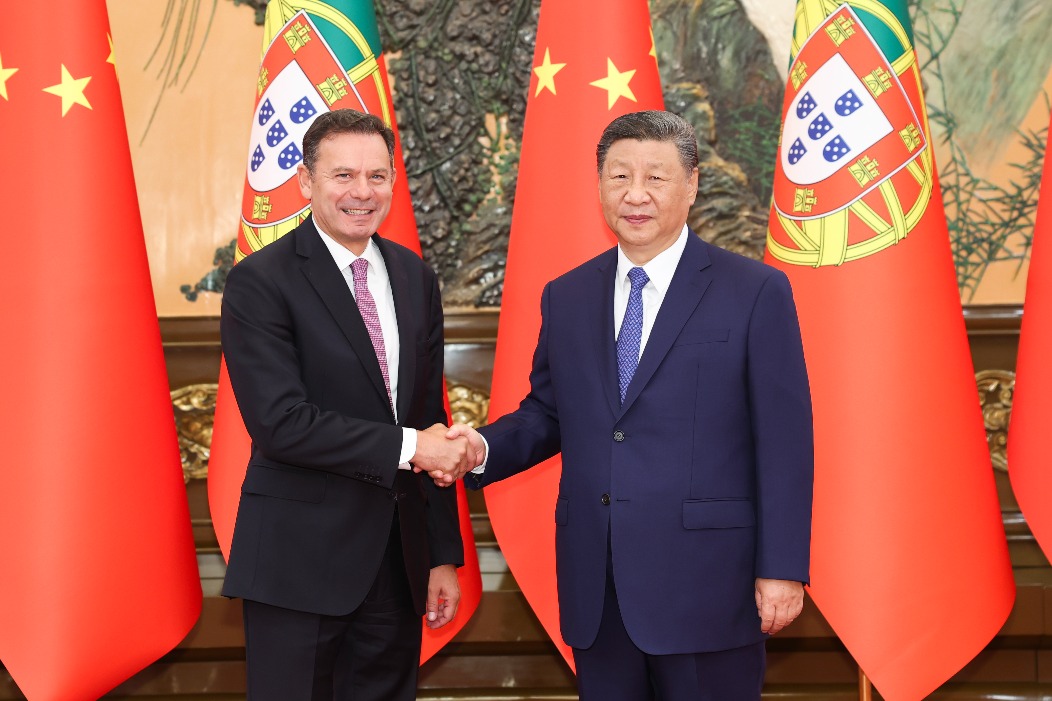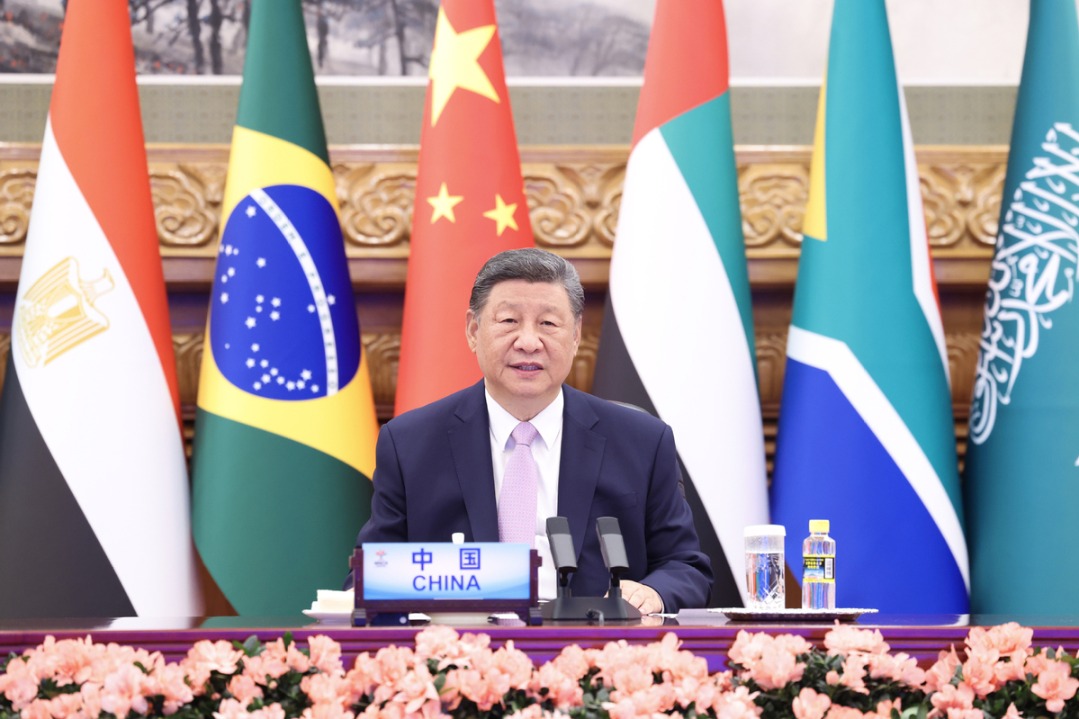Rising 'private' exports build case for push

With China's non-public sector exports reaching nearly 52 percent of the nation's total in April for the first time this year, Chinese private companies have proved that they are fully capable of contributing more to facilitating the country's foreign trade amid the COVID-19 fallout and creating more fresh momentum to uphold the long-term growth of the national economy.
Though many people didn't expect that the country's exports can recover within a short period in April, China's exported-oriented companies from the private sector had successfully managed to ship more goods, including electromechanical, textile and plastic products, to other parts of the world. This was largely on the back of their flexible market strategies, timely adjustment of their product structures and early analysis of market trends in both the general global market demand and the demand during the post-pandemic era.
These moves were consistent with the government's recent call for efforts to ensure the "six priorities"-safeguarding employment; people's livelihoods; the development of market entities; food and energy security; the stable operation of industrial and supply chains; and the smooth functioning of society.
Thanks to a slew of supportive government policies and measures and Chinese manufacturers' new moves to better adapt to the changing global market environment, China's foreign trade recovered in April, while its exports grew 8.2 percent year-on-year to 1.41 trillion yuan ($198.56 billion), data released by the General Administration of Customs showed.
To date, four factors have effectively supported and guided the development of the non-public sector, as well as assisted private companies to expand their export channels and better build their brand presence across the world.
First of all, the central and local governments have built a favorable policy environment for private companies to secure orders not only from developed markets, but also from emerging economies, to enrich and diversify their product lines and sales channels. The central government has introduced a series of fiscal policies to cut taxes and fees, as well as facilitate customs clearance, inspection and quarantine for private firms.
Boosted by these policy measures, private enterprises have shown greater vitality against a background of constant introduction of new foreign trade formats. They have become one of the main forces in driving China's foreign trade growth. Meantime, local governments have also issued a number of corresponding policies to help private enterprises boost foreign trade, based on their regional industrial structures, natural resources and locations.
Second, private enterprises have already changed their minds and vigorously improved general trade by promoting their goods on both offline and online business platforms, For instance, more than 21,393 of them participated in the 126th session of the China Import and Export Fair, also known as the Canton Fair, accounting for more than 85 percent of businesses that took part in the event in the second half of last year. They formed the largest participant group during the event.
In addition to participating in major trade fairs, many private companies have been relying on the China-Europe freight rail service to ensure their logistics channels to other global destinations, as a total of 2,920 trips were made during the first four months of this year, and 262,000 TEUs (twenty-foot equivalent units) were transported between the two regions, surging 24 percent and 27 percent year-on-year respectively, according to China State Railway Group, the country's railway operator.
The freight train service between China and Europe had hit a monthly record high in April as it plays a bigger role in maintaining the global supply chain amid the pandemic.
Apart from shifting their market focuses from traditional developed markets such as the United States and Europe to other markets, including members of the Association of Southeast Asian Nations and economies related to the Belt and Road Initiative, Chinese manufacturers from the private sector have been raising their production capacity on making products including household, textiles, childcare and sanitation products to meet the rising demand of the global markets over the past three months.
According to the Customs data, China's foreign trade with the ASEAN group, its largest trading partner now, jumped 5.7 percent year-on-year to 1.35 trillion yuan between January and April of this year, while its trade volume with the European Union and the US fell 6.5 percent and 12.8 percent to 1.23 trillion yuan and 958.46 billion yuan, respectively.
Third, to prevent financial losses, many of China's private enterprises have made plans in advance for dealing with the epidemic situation after the Spring Festival holiday. In particular, private manufacturers in Zhejiang, Guangdong, Jiangsu, and Shandong provinces have made early preparations for production resumption, export schedules, material and part purchases in response to the lack of consumer goods in Europe and the US due to temporary shutdowns of their manufacturing sectors. Even though many European countries were in urgent need of those items, they were able to pick up their shipments ordered from China within a reasonable period.
The final point is that to confront the tough time, private businesses have formed closer partnerships and supported each other during the outbreak to jointly mitigate the impact of the virus on business. Under their partnerships, they have shared orders when there were insufficient overseas orders, and raised cross-border e-commerce trade activities when the domestic market was insufficient.
As the private sector has become the main contributor to job creation and technological innovation and an important source of tax revenue today, the sector will not only play a critical role in developing the market economy, transforming government functions, transferring surplus rural labor and exploring the international market, but also push the progress of the supply-side structural reform, seeking high-quality development and building a modernized economy.
As long as the country maintains its strategic resolve, upholds the underlying principle of pursuing progress while ensuring stability, keeps building better environment for the development of private companies and addressing their difficulties, China's private companies will reach high-quality development and embrace brighter growth prospects. The proportion of private companies' export volume will increase to between 60 percent and 65 percent over the next five years.
Therefore, more measures should be taken to address the difficulty and high cost of financing for private firms. The financial market thresholds should be lowered to expand the fundraising channels of private firms. Necessary financial aid should also be provided for private companies that follow the direction of the country's economic upgrading and have positive prospects. An environment of fair play must be created for private enterprises in market access, administrative approvals, business operations, bids and tenders and military-civil integration, as well as more access to participating in the reform of State-owned enterprises.
Moreover, government policies should be better implemented and coordinated meticulously to give private firms a stronger sense of fulfillment. In law enforcement involving work safety and environmental protection, authorities should avoid the one-size-fits-all approach.
Although it is unexpected for private enterprises to play such a large role as to reinforce China's foreign trade under the impact of the epidemic these days, they have proved that the government policies and their market tactics are effective and flexible in helping them out of the woods. Based on these facts, private companies certainly will have more strength to support China's foreign trade from a long-term perspective.
Despite the epidemic head wind, China still registered 1.26 million new enterprises in the first quarter of this year, with about 99.42 percent of them being private companies, showing the confidence from the private sector, according to data released by Beijing-based China Association of Small and Medium-Sized Enterprises.

Today's Top News
- HK rises to 4th place in intl talent rankings
- Israel targets Hamas leadership in Qatar
- French President Macron accepts PM's resignation: media
- Revision of foreign trade law necessary move: China Daily editorial
- Model of mutual respect and cooperation shows importance of trust in turbulent times
- Xi sends Teacher's Day greetings, urges nurturing capable youth for socialist cause






























